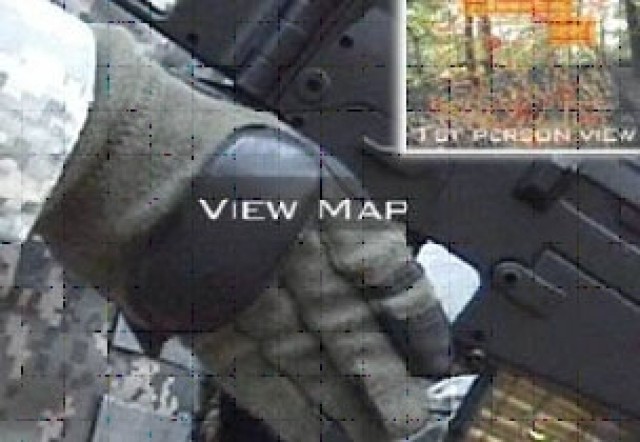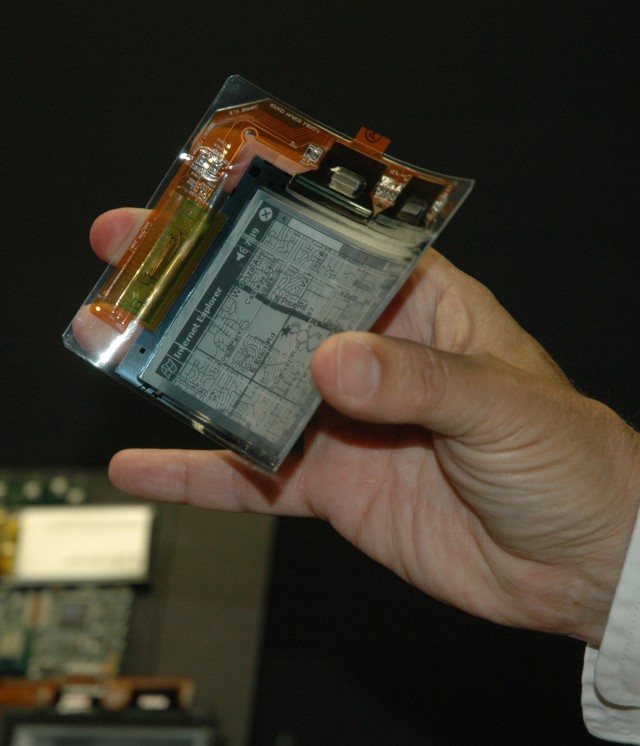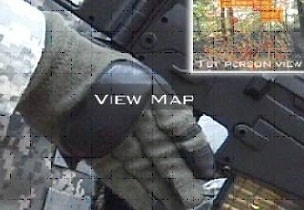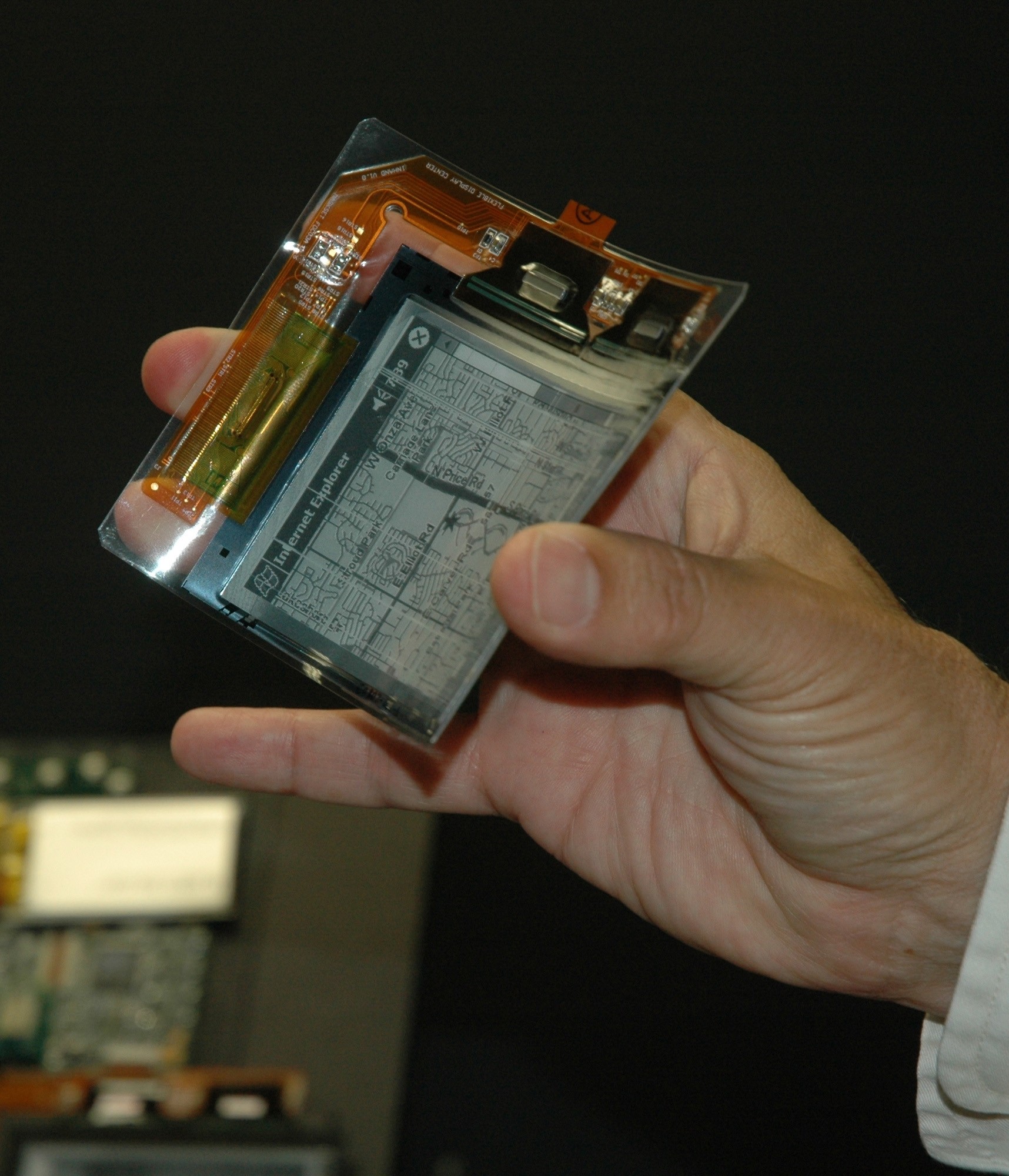ABERDEEN PROVING GROUND, Md. Aca,!" Aca,!A"The Dark KnightAca,!A? has emerged once again in theatres with his futuristic technologies to help capture the infamous Joker. BatmanAca,!a,,cs needs for increased capabilities are parallel with that of todayAca,!a,,cs Soldiers and it appears so are some of his gadgets.
The U.S. Army Research, Development and Engineering Command labors to answer the needs of the nationAca,!a,,cs Warfighters. Among those needs are increasing maneuverability, decreasing weight carried during a mission, and enhancing technological capabilities and communication advantages when engaging enemy forces.
One answer to those needs is the Flexible Display Screen.
The U.S. Army Research Laboratory has partnered with academia to develop a screen that will replace glass based display screens in the Soldier Flex Personal Digital Assistant. The screen could be one-day be used in wearable computer applications as part of a larger computer system.
Aca,!A"Just changing the screen can significantly reduce the weight of a piece of equipment,Aca,!A? said Dr. David Morton, ARL cooperative agreement manager for the Flexible Display Center at Arizona State University. Aca,!A"By replacing that glass screen with a plastic, rugged, flexible display, the weight of the display may be reduced to only five pounds with two pounds of mounting hardware.Aca,!A? Technologies like the Flexible Display Screen aim to increase Soldier efficiency and decrease the amount of weight the Warfighter carries, which increases mobility of the Soldier.
The ARL is looking at reflective and emissions technology for the screens to be integrated in human portable applications. This would allow the Soldier to see the screen without the use of backlighting, as to not give away a location of a Soldier while on a mission. By replacing the current liquid crystal glass-based display, the amount of battery power used drops by at least half, and the display is less likely to break while on a mission. This screen will allow the Soldier to download the information, disconnect and take on a mission for activities such as mission rehearsal and planning and land navigation.
Just like Batman found it necessary to expand his technological capability when he designed a 3-D Sonar tracking device to search for the Joker, RDECOM looks for ways to amplify the technological advantages of Soldiers.
The U.S. Army Natick Soldier Research Development and Engineering Center has a contract with RallyPoint, Inc., to further develop and test the Handware Computer Input Device, or HCID. The device is a rugged, sensor-embedded glove designed to be a convenient interface to a SoldierAca,!a,,cs electronic devices, like a computer or 2-way radio. Ideally, while on a mission, a Soldier could keep his weapon engaged, while signaling hand gestures that translate into computer commands. Gestures are recognized through a suite of sensors that send hand posture and orientation. These voiceless commands will enable Soldiers to communicate with each other without compromising their position when engaging the enemy. The glove could one-day feed information to a wearable computer application, giving Soldiers an informational and technological edge.
While saving hostages in a building, Batman demonstrated the capability to look through floors of a building, enabling him to locate the enemy and engage. The U.S. Army Communications- Electronics Research, Development and Engineering Center is developing a similar product called Sense through the Wall Technology.
Aca,!A"Our skilled engineers with CERDECAca,!a,,cs Intelligence and Information Warfare Directorate are working with industry partners to assess, develop, and transition technology that will allow Soldiers to detect and locate hidden combatants,Aca,!A? said Wilber Chin, team lead, MASINT Branch, Information/ Network Operations Division, Intelligence and Information Warfare Directorate.
With STTW, the Warfighter can identify and locate enemy forces and equipment hidden behind walls, doors and other obstructions in an urban terrain. STTW uses radar technology, and will increase the SoldierAca,!a,,cs situational awareness, force protection and survivability.
For decades, Batman has vanquished villains with his intellect, gadgets, skill and muscle. For centuries, Soldiers have been AmericaAca,!a,,cs heroes, swearing to protect and defend its citizens. Just like Wayne EnterpriseAca,!a,,cs chief scientist Lucius Fox, who develops many of BatmanAca,!a,,cs gadgets, RDECOM scientists and engineers work to steadily improve the equipment of its knights, the nationAca,!a,,cs Warfighters.




Social Sharing